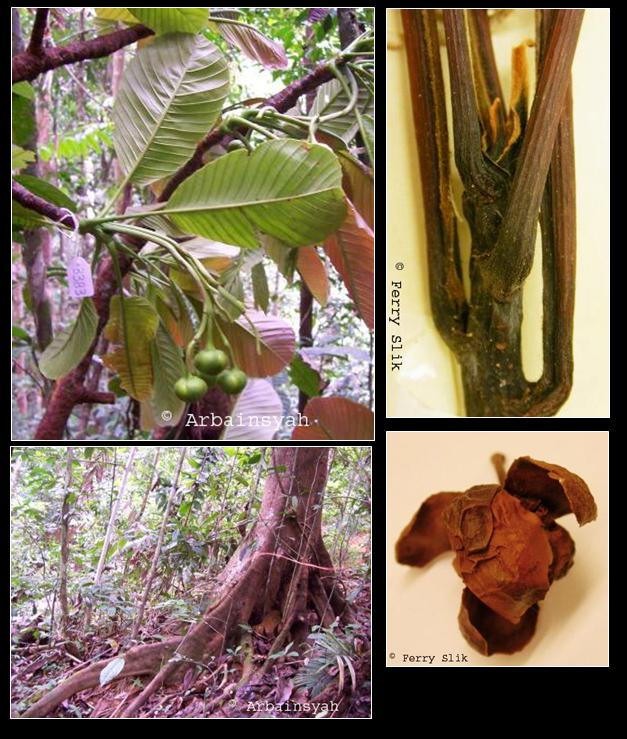Dillenia borneensis Hoogl., Blumea 7 (1952)
Latin for 'from Borneo'.Diagnostics
Upper canopy tree up to 45 m tall and 80 cm dbh, with stilt roots. Stipules absent. Leaves
alternate, simple, penni-veined, margin toothed. Flowers ca. 40 mm in diameter,
yellow, placed in loose racemes. Fruits ca. 20 mm long, green-brownish, fleshy
capsule.
Description
Tree, probably deciduous, up to 45 m high, 80 cm diam., with stilt-roots. Leaves elliptic to
elliptic-oblong or obovate, ca 25-35-nerved, 25-40 by 12-20 cm, with rounded apex, obtuse base, and
minutely undulate-dentate margin. Petiole 4-9 cm long, densely sericeously hirsute above. Inflorescence
a 3-10-flowered composed raceme, forming a loose cluster. Flowers appearing with the leaves,
ca 6 cm diam. Sepals 5, elliptic, 1.2-2 by 0.8-1.4 cm. Petals yellow, ca 2.5 by l.5 cm. Stamens ca
335, in 2 distinct groups, either the outer group all of the same length, ca 8 mm long, straight in bud,
the inner group ca 14 mm long, with their apex reflexed in bud, or the stamens of the outer group
gradually decreasing in size towards the centre from 11 to 4 mm, with their apex more or less
inflexed in bud, those of the inner group ca 13 mm long, with their apical part {ca 2 mm) reflexed.
Carpels 7-8, ca 8 by 1 mm, with ca 8 mm long styles, each with ca 25-50 ovules. Fruit ca. 20 mm long,
green-brownish, fleshy capsule. [from Flora Malesiana]
Ecology
In undisturbed and secondary mixed dipterocarp forests up to 500 m altitude.
Usually on hillsides and ridges, but also found on alluvial sites. On sandy to
clayey soils.
Uses
The timber is locally used.
Distribution
Borneo.
Local names
Borneo: Gerige, Rakau, Riga, Rogung, Simpoh jangkang, Simpur.
